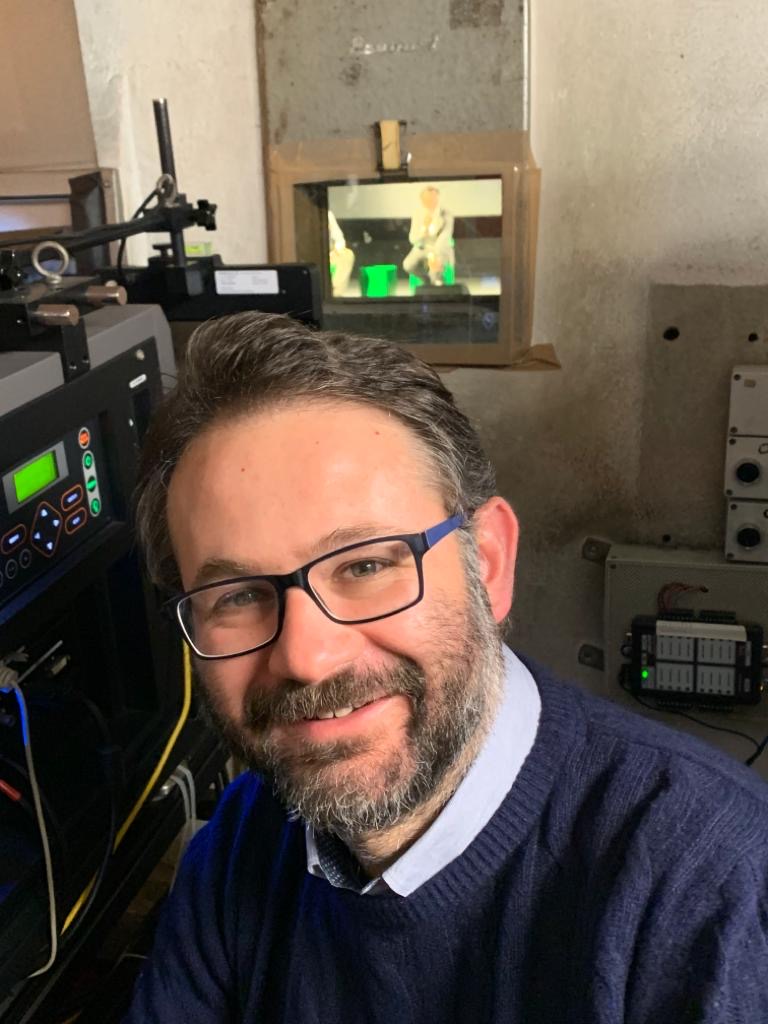
Marco Rondonotti
(Università Cattolica di Milano)
We have become increasingly aware of how insistently the informational society in which we live today pushes us to find new meanings for the anthropological and relational dimensions of our daily lives. A question that I have always found very interesting revolves around the quality of the social bonds that support community life and their development through processes that can activate people’s potentials to be applied in the contexts in which they perform their daily activities.
In fact, if on the one hand we can collect numerous indicators that outline the characteristics of a society that can be defined as liquid, on the other we perceive how the desire to belong to a community is still very much alive (Bauman, 2003). In addressing this apparent aporia, my interest turned to the concept of community technologies (Rivoltella, 2017), that is, the way that digital socio-educational work can support the initiation of new social ties or the strengthening of existing ones. My research focuses on a particular form of community: the ecclesial community. This choice is motivated by at least three considerations:
- firstly, it is an interesting form of spiritual community spread throughout the entire Italian national territory;
- secondly, in this historical moment parishes are rethinking what it means to be a community and the ways to be a community that supports the integral growth of its parishioners;
- lastly, in recent years the Italian Church has shown particular interest towards media (71st General Assembly of the Italian Episcopal Conference, Rome May 2018), and it has been trying to develop some guidelines to share with local parishes often encountering resistance and diffidence within the communities.
My research aims to investigate the potential of pastoral practices to stimulate reflections on what it means to be a community; analyze the ability to generate, through technologies, a communal connective tissue between different parish groups; accompany the participants of the experimentation to plan educational interventions capable of applying not only the information-organizational dimension of technologies, but also their connective-relational capabilities.
Against this backdrop, together with a group of scholars working for the Research Center in Media Education, Innovation and Technology (CREMIT) of the Catholic University of the Sacred Heart of Milan, I analyzed the media practices of 1000 pastoral operators active in local parishes. In addition to the quantitative data collected, the team conducted an ethnographic investigation, which allows to identify five community typologies (waterproof, neophyte, empowered, festive and connected).
The first category, that I identify with the term waterproof, gathers all those groups that explicitly exclude technologies from their ordinary experiences because these are seen as a source of distraction and danger.
The second profile, the neophyte community, includes those parishes that are timidly approaching technologies and that use them predominantly as instruments or tools: they access the Internet no more than three or four times per year and they do so mostly to retrieve functional material for pastoral initiatives, to find ready-to-use prayers to use during the celebrations.
The third typology, the empowered community, seeks to experience the relational logic distinctive of digital devices, with a more frequent use of technologies. For these types of communities, media embody the possibility of extending relationships beyond the moments shared in parish contexts; this happens, for examples, with WhatsApp groups created by the parents whose children attend Sunday school, or with cloud work environments used by pastoral operators.
The fourth profile is represented by the festive community, a term chosen both to juxtapose it to a workdays use of the media and to evoke the convivial character of a party. This is a community capable of activating the participation of its members by employing the connective potential of media, but it does so only during special events such as the parish festival or the summer camps organized for local children.
The last profile, linked to a creative use of the media and to the conception of a community that lives beyond physical presence (without ever losing sight of this dimension), falls under the category of connected community. These communities use technologies habitually and adopt media as community aggregators through a participatory approach and as a stimulus to actively reflect on the implications that these media have on the community.
These five typologies allow to profile the ways in which the communities interact with digital media: from those who interpreted them either as tools, environments or relationship activators for the members of the same parish. The emerging panorama reveals that media are not used so much in to implement the Church’s missionary work, but as institutional tools of communication and organization of everyday life in to strengthen the community’s own identity and boundaries.
These observations are the results of examinations conducted among parish priests and pastoral operators belonging to four parishes located in Piedmont, Tuscany, Puglia and Basilicata. Within these communities I concretely collaborated in the activation and animation of authorial communities (online and in presence) capable of producing and sharing considerations starting from their firsthand experiences. More specifically, the priests were asked to start a journey in which their parishioners were solicited to reflect on the sense of community they were experiencing in their parishes and to experiment using social media to talk about each other, to exchange ideas and build shared narratives capable of supporting the formation of a common identity in which to recognize themselves. My work, thus, aimed at recording what happened during the experimentations of the paradigm of community technologies in these ecclesial contexts.
To conclude, I would like to share four results obtained from my work.
Firstly, parish operators recognized the importance of defining a pedagogical framework capable of supporting pastoral initiatives by reflecting on the advantages of including digital media in pastoral actions. To this end, the operators also understood the importance of developing the appropriate skills to engage with technologies in order to support others and help them not to fall into the trap of easy conformism.
A second result was having stimulated the operators to inquire about the ways in which digital technologies may be usefully be included in ordinary educational actions overcoming naive and oversimplified ideas about technology. For example, they came to the awareness that social media must not be used solely to keep up with an inevitable “linguistic rejuvenation”, but must be seen as concrete possibilities of encounter, mutual acquaintance and interaction.
An additional result is the recognition that technologies stimulate the activation of groups of adults, who can thus feel involved and get a chance to “speak up” (Zanchi, 2018). Communities come to life not only thanks to the discourses that intercept people’s needs (implicit or explicit), but also because the interactions manage to positively activate the whole context. In some ways we can say that even in the pastoral contexts, technologies can function as channels (Virilio, 2000), in the sense that they can help to introduce into pastoral practices new ways of inclusion and listening.
Lastly, operators experienced this experimentation as an opportunity to reflect in depth on their practices (Altet, 2013), on their sense of community and on the meanings that they give to their own roles in the community.
Reflecting on the theology of the people of God (Neuner, 2016) is useful to understand the importance of emphasizing the “horizontal dimension” of the Christian experience, which entrusts every baptized believer with the mission to bring humanity under one family in Christ.
References
Altet, M. (2013). Former des enseignants réflexifs: Obstacles et résistances. Louvain-la-Neuve: De Boeck Supérieur.
Bauman, Z. (2001). Voglia di comunità (4th ed.). Roma-Bari: GLF Editori Laterza.
Neuner, P. (2016). Per una teologia del popolo di Dio. Brescia: Queriniana.
Rivoltella, P. C. (2017). Tecnologie di comunità. Brescia: La scuola Morcelliana.
Rivoltella, P. C. (2018). Quale presenza ecclesiale nell’attuale contesto comunicativo. Relazione principale alla Conferenza Episcopale Italiana 71° Assemblea Generale. Roma 21-24 maggio 2018. https://comunicazionisociali.chiesacattolica.it/wp-content/uploads/sites/4/2018/05/22/Relazione-Pier-Cesare-Rivoltella-Assemblea-generale-maggio.docx
Virilio, P. (2000). La bomba informatica. Milano: R. Cortina.
Zanchi, G. (2018). Rimessi in viaggio. Immagini di una chiesa che verrà. Milano: Vita e Pensiero.
Marco Rondonotti has a PhD in Pedagogy. He conducted his research project entitled “Community Connections” at the Catholic University of the Sacred Heart of Milan. In 2003 he obtained the Baccalaureate at the Theological Faculty of Northern Italy with a thesis on the theology of the laity. He has been collaborating with CREMIT since 2015 where he works on media education and on the Pastoral Web project. In particular his studies focus on the use of the community technology paradigm in socio-educational work and in pastoral contexts.

![[GLOBAL CREMIT] Community Connections: Community Technologies in Ecclesial Contexts](https://www.cremit.it/wp-content/uploads/2020/03/WhatsApp-Image-2020-03-23-at-15.55.42.jpeg)






